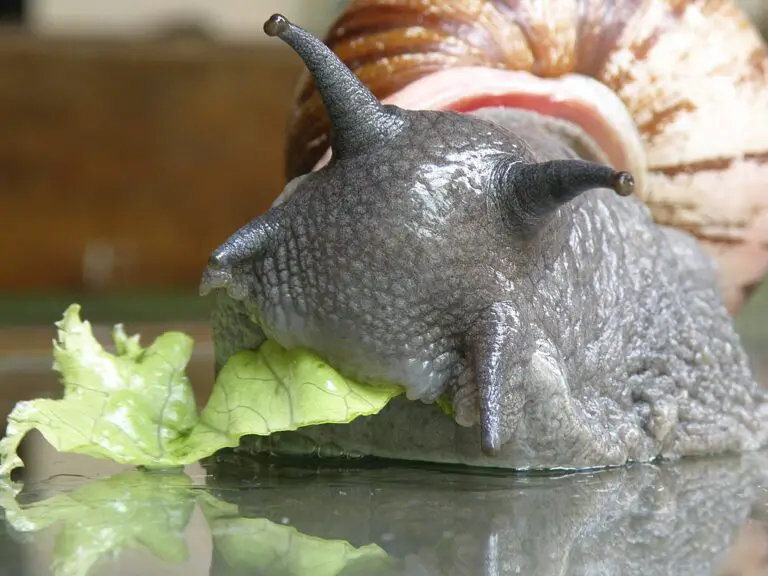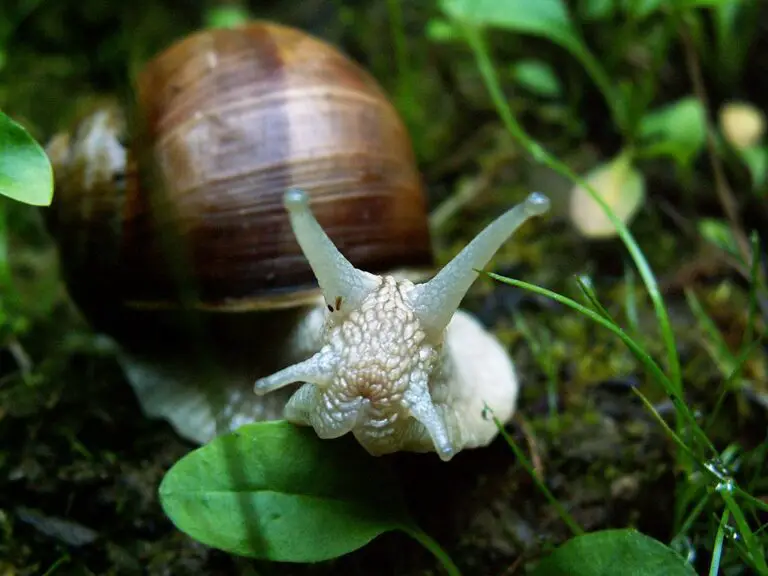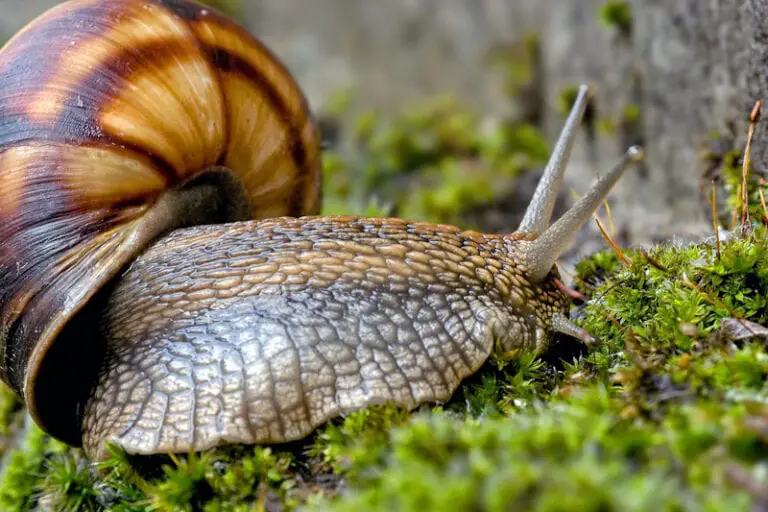The Eye-Opening Truth: Snails Do Have Eyes!

Do Snails Have Eyes?
Have you ever taken a moment to look a snail right in the eye? It might sound odd, but snails do have eyes, and there’s quite a bit more to these little orbs than meets our human eye.
In this exploration, we’re focusing on snail’s eyes. They are part of an intricate creature that falls under the gastropod category, a diverse group of invertebrates, which also includes slugs. Over 43,000 species of snails can be found around the world, each differing in shape, size, and even eye structure.
These little guys make the most out of their shells – not only do they offer protection from potential predators, but they also assist in buoyancy control when our friends are in water.
But back to the eyes – they might be small, just about 0.5-1mm, and not immediately visible, but they are essential for a snail’s survival. So, if you’re curious to learn more about the eye-opening world of snail’s eyes, let’s get going.
Yes, Snails Have Eyes
However, they are not like our eyes with lenses that focus light onto a retina. In this section, we will explore the structure and location of snail’s eyes to give you an idea of how they see the world.
Where Are Their Eyes Located?
Snail’s eyes are located at the tip of their tentacles. Most species of snail have two pairs of tentacles on their head, one long and one short.
The longer pair has a bulbous end which is where you’ll find the snail’s eye. The shorter tentacles are used for smelling and touching.
When you look closely at a snail’s eye, you’ll notice that it is not like a human’s eye or even an insect’s compound eye. A snail’s eye is small and black with a flat surface that sits on top of a stalk-like structure called the optic nerve.

What Do Their Eyes Look Like?
A snail’s eye looks like a small black dot or bead-like structure. It does not have any iris or pupil since it cannot change its focal length or control how much light enters its eye.
Instead, it has a transparent cornea covering that helps to protect its delicate structures from damage. Interestingly enough, each pair of tentacles has its own set of eyes with distinct features.
For example, some species may have larger eyes than others while some may have more curved corneas to improve their visual acuity. In addition to this, some species’ eyes can detect polarised light which helps them navigate their environment better by detecting changes in reflective surfaces such as rocks or plants.
Snails do indeed have eyes located on the tips of their tentacles. They are tiny black dots with a flat surface that sits on top of a stalk-like structure called the optic nerve.
Each pair of tentacles has its own set of eyes, although they may differ in size and shape from species to species. In the next section, we will explore how snails use their eyes to survive in their environment.
How Snails Use Their Eyes
Snails may not be known for their great vision, but their eyesight actually plays a crucial role in their survival. Let’s take a closer look at how they use their eyes to get around and find food.
What Can They See?
Snails have a type of eye called a “simple eye” or “eyecup,” which consists of a single lens that can detect light and dark. They can’t see colors or distinguish fine details, but they are able to differentiate between light and dark areas. This allows them to navigate through their environment and avoid obstacles.
Interestingly, snail eyes are located on the tips of retractable stalks that can move independently of each other. This allows them to scan their surroundings for potential threats or opportunities while remaining safely hidden within their shells.
How Do They Use Their Vision to Survive?
Despite the limitations of their simple eyes, snails are able to use them in some impressive ways. For example, they have been observed using visual cues to locate food sources from several feet away (for a more detailed look into what snails eat, check out our comprehensive guide). They also use their sense of sight to detect other snails in the area, which helps them find potential mates.
Additionally, snail eyes play an important role in regulating behavior based on circadian rhythms – the natural 24-hour cycle that governs sleep-wake patterns and other bodily processes. Scientists believe that changes in light levels detected by snail eyes help regulate these rhythms.
As you might imagine, vision is especially important for land-dwelling snails since they must navigate through complex environments without any support from water currents. In fact, some species of land snails have even developed incredibly sensitive photoreceptors that allow them to detect polarized light – something humans are unable to do!
Overall, while snails may not have the most advanced or sophisticated visual systems, their eyes play a critical role in their survival and behavior. Without these humble organs, these amazing creatures would be lost in the dark.

Unique Features of Snail Eyes
Snails are fascinating creatures with unique characteristics. One of the most interesting features is their eyes. Snail eyes are unlike any other animal’s eyes and have many unique features that make them special.
How are snail’s eyes different from human’s eyes?
Snails have a very different eye structure than humans. Unlike humans, whose eyes are located on the front of their head, snails’ eyes are located on the tips of their two tentacles. The tentacles can be moved independently to provide a wider field of vision.
Snails also have a unique type of eye called a “simple eye.” Simple eyes only have one lens and can detect light and dark but not colors or shapes like complex eyes do. In comparison, humans have complex eyes that can see in color and detail.
Do all species of snails have the same type of eye?
Not all species of snails have the same type of eye. Some species, such as terrestrial snails, have simple eyes.
Other species, such as sea snails, may have more complex visual systems with more lenses for better vision in water environments. One example is the cone snail which has highly evolved visual systems with hundreds or even thousands of small lenses in its complex compound eye that allows it to see in great detail underwater.
Comparison between Snail’s Eyes and Other Animals’ Eyes
When compared to other animals’ eyes, such as mammals or birds, snail’s simple eye structure may seem inferior. However, there are some benefits to having simple eyes like those found in snails.
Simple eyes don’t require as much energy to function because they don’t need to process as much information as more complex visual systems do. This makes them ideal for animals like snails that don’t move around too much.
Additionally, the location of the snail’s eyes on the tentacles allows them to scan their environment more efficiently than animals with eyes on the front of their head. Snails can move their tentacles to get a better view of their surroundings without having to turn their body.
How do snail’s eyes compare to insects’ eyes?
Insects have compound eyes that are made up of many small lenses. These types of eyes allow insects to see in high detail and detect motion, which is important for predators and prey alike.
Snails, on the other hand, have simple eyes that can’t see in as much detail or detect motion as well as insects’ compound eyes do. However, snails make up for this with their unique eye placement on their tentacles which allows for greater movement and scanning ability than most insects have.
What can humans learn from studying snail’s eyes?
Studying snail’s unique eye structure can provide insight into how organisms evolve different visual systems based on their environment and lifestyle. Additionally, understanding how simple eyes work could lead to new developments in artificial vision systems that are less energy-intensive than complex systems like those found in human-made cameras.
Overall, while snail’s simple eye structure may seem inferior at first glance, it actually provides some benefits over more complex visual systems found in other animals. By studying these unique features we can learn more about evolution and potentially develop new technologies based on what nature has already perfected.
Conclusion
After exploring the world of snail eyes, it is clear that these creatures are more complex than we give them credit for. From their intricate eye structures to their unique vision abilities, snails have evolved in fascinating ways to survive in their natural habitats. We learned that although they may not have the same visual acuity as humans or other animals, snails’ eyes are perfectly suited for detecting light and movement.
They use their vision to navigate through the world around them, avoiding predators and finding food sources. Understanding basic biology about animals like snails is important because it allows us to appreciate the diversity of life on our planet.
By learning about different species and how they’ve adapted to their environments, we gain a greater appreciation for the complexity of nature. But beyond simply appreciating nature, studying biology can also help us solve real-world problems.
Scientists often look at how species adapt to changes in their environment as a way of predicting how other organisms might respond to similar changes. This knowledge can be used to inform conservation efforts or help us better understand how ecosystems function.
So next time you come across a snail in your garden or on a hike, take a moment to appreciate its unique qualities – including its incredible eyesight. Who knows what other fascinating adaptations these creatures possess that we have yet to discover?






